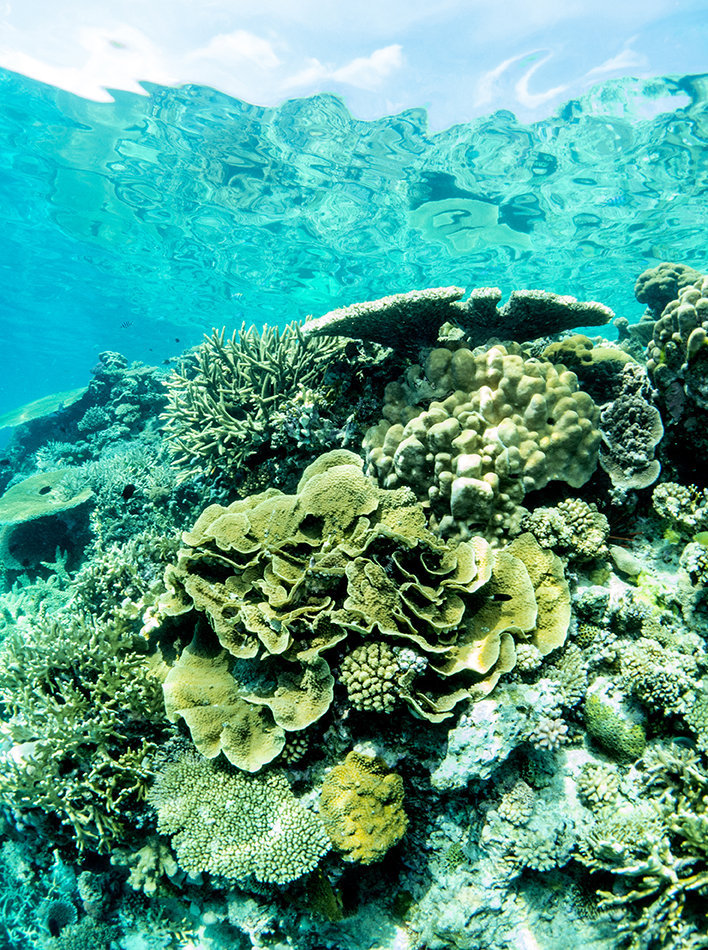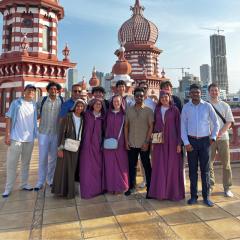Broken and dead coral will be recycled to help protect and grow the Great Barrier Reef in a collaborative project involving University of Queensland researchers.
UQ Civil Engineering and Biological Sciences researchers are working with engineering, science and technology consultancy BMT, to investigate creating coral-filled net structures to turn unstable rubble into coral structures known as bommies.
School of Civil Engineering researcher Professor Tom Baldock said he hoped the pilot project would show the artificial bommies could promote the growth of new coral and protect adjacent coral from cyclone damage.
“The idea is to take broken coral from the sea bed, wrap it into a natural-fibre net to provide a stable base for new coral recruitment, and place these artificial bommies in such a way as to protect other areas of the reef from cyclone wave damage,” Professor Baldock said.
“On a healthy reef, the wave energy is reduced by the coral structure, enabling broken coral to naturally bind to form a stable layer, initially through the growth of crustose coralline algae, or CCA”.
“CCA helps bind coral rubble together to create the framework for reefs and releases chemicals which attract free-swimming coral larvae,” he said.
“Stabilising and compressing the broken rubble into a single stable mound should assist this process”.
 School of Biological Sciences researcher Professor Peter Mumby said it was important to maximise the recovery rate of corals in the face of accelerating climate change impacts leading to coral bleaching.
School of Biological Sciences researcher Professor Peter Mumby said it was important to maximise the recovery rate of corals in the face of accelerating climate change impacts leading to coral bleaching.
“Stabilising coral rubble is likely one of the most effective ways of speeding up this process after major disturbances,” he said.
The team hopes to show that strategically placing the 2m-diameter bommies will fast-track the repair of damaged areas and provide enhanced fish habitats while protecting existing exposed corals from further damage.
The work builds on the recent Capturing Coral Reef and Related Ecosystem Services project led by UQ.
Professor Baldock said the team hoped to work with indigenous communities to find a natural fibre for constructing the netting to hold the coral rubble.
“We want the netting to have no adverse effect on its environment. Working with traditional custodians will help make sure that we protect the existing aquatic environment as well as promote new growth.”
BMT’s Dr David Rissik said the project could make significant in-roads into helping save the Great Barrier Reef.
“The team is very excited to be involved in helping the Great Barrier Reef respond to the significant pressures that it faces, helping to increase its resilience while we wait for climate change to be addressed and catchment pressures to be reduced,” he said
The pilot project has been funded by the Australian and Queensland governments and is being run through the Advance Queensland Small Business Innovation Research Coral Abundance Challenge.
Media: Professor Tom Baldock, t.baldock@uq.edu.au, +61 7 3346 9342; Professor Peter Mumby, p.j.mumby@uq.edu.au, +61 7 3365 1686; Dr David Rissik, BMT, David.Rissik@bmtglobal.com, +61 466 207 436; comms@eait.uq.edu.au, +61 404 972 319.



